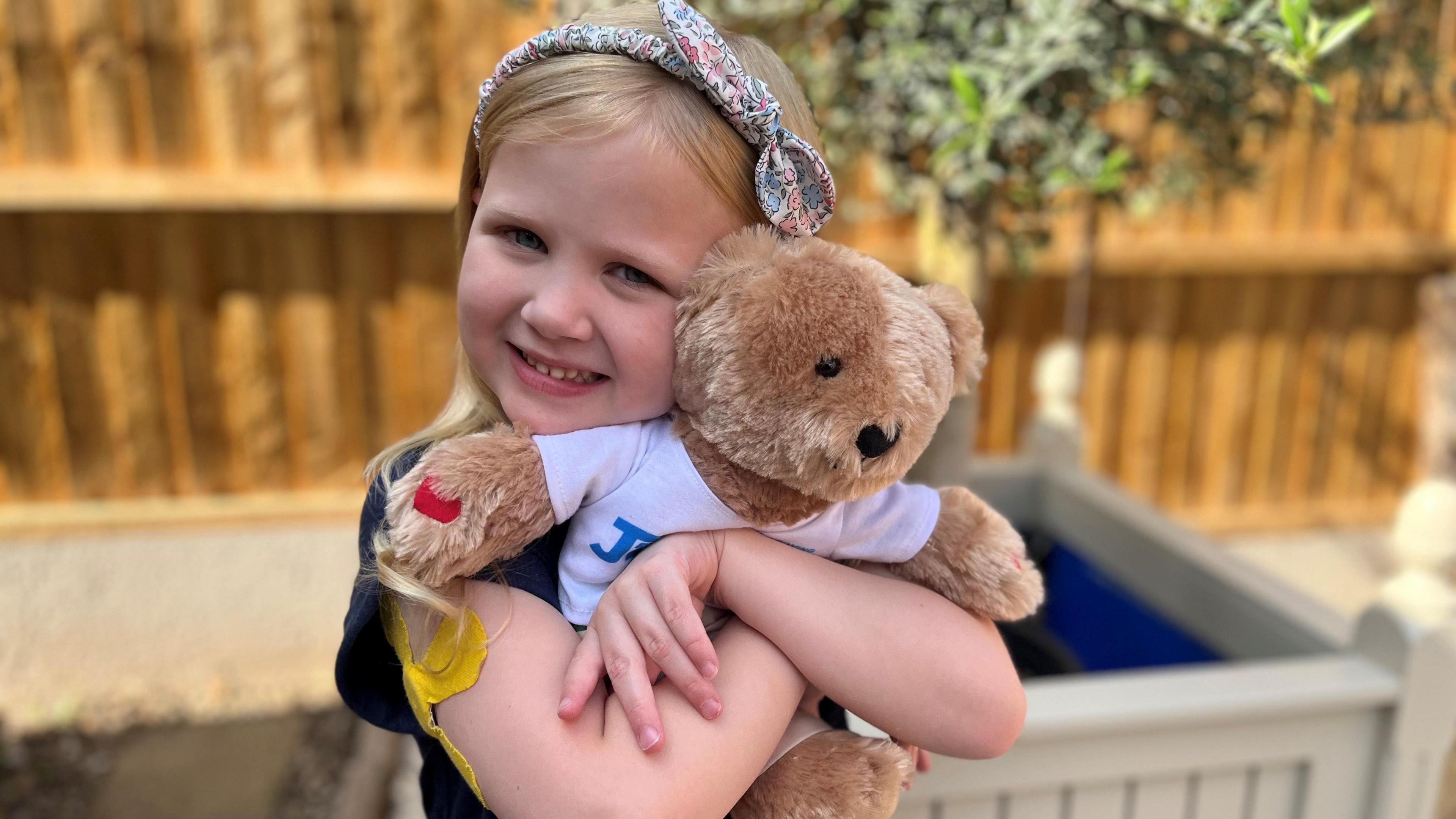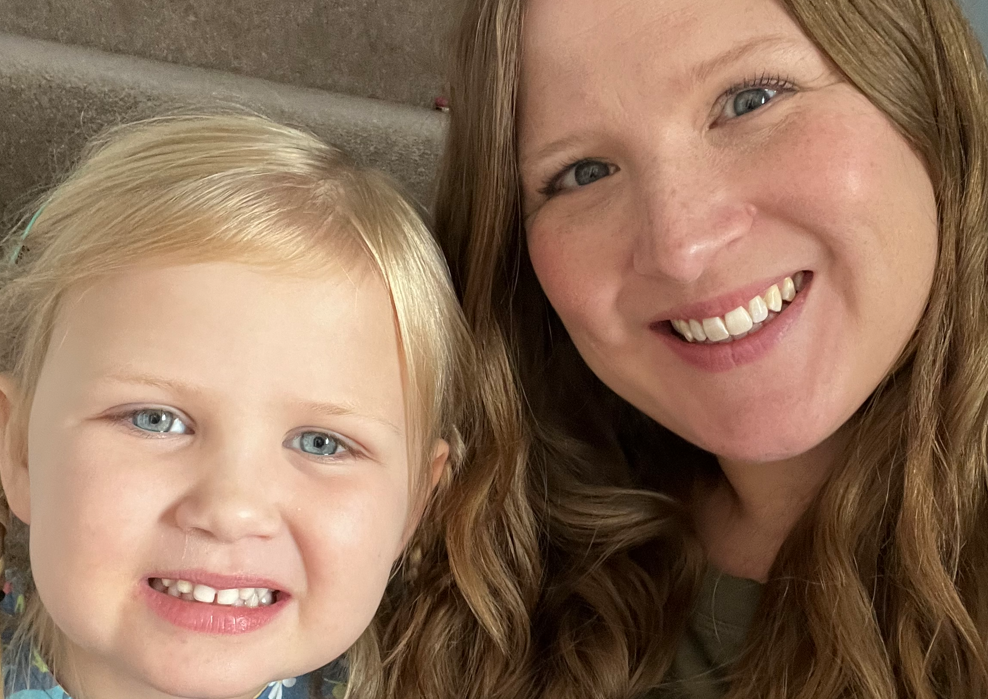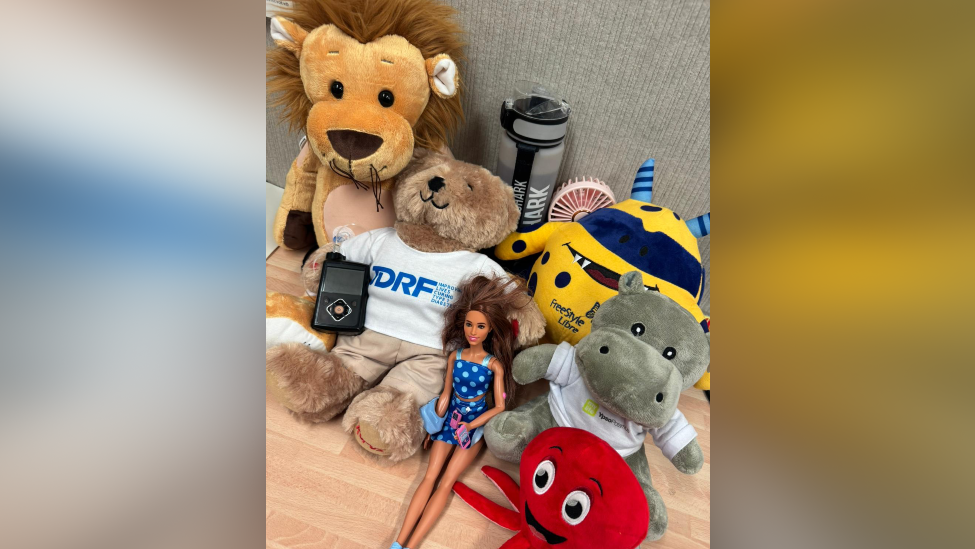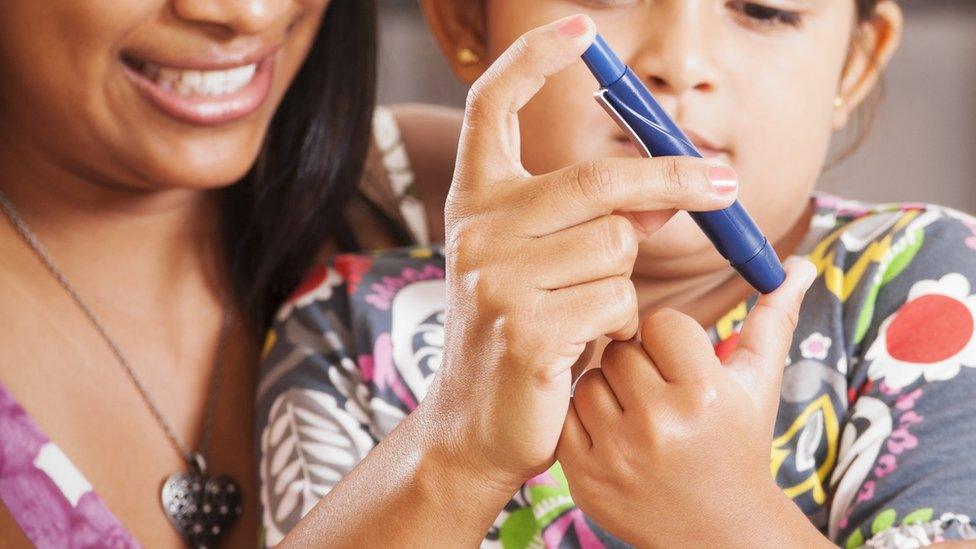'Adapted toys help my daughter understand diabetes'

A teddy fitted with a insulin pump has helped medics show Hattie Powell how her own device will work
- Published
A five-year-old girl has taken her newly diagnosed type 1 diabetes "in her stride" with the help of toys specially adapted to explain the condition, her mother has said.
Hattie Powell, from Anstey in Leicestershire, was diagnosed earlier this month after her parents became concerned that she had an unusual and unquenchable thirst.
Staff at the Leicester Royal Infirmary (LRI) used toys, including a teddy bear fitted with a blood glucose monitor and insulin pump, to explain to Hattie how she would be affected and how to manage the disease.
"Diabetes is a really complicated and serious thing," Hattie's mother Katie said.
"It's hard for us to understand as her parents but thanks to the bear, and the special games, Hattie has really quickly become familiar with a new routine.
"She knows she needs insulin before meals, that when her [glucose] monitor's alarm goes off we need to take action.
"Quite quickly, she has taken it in her stride.
"She's very quickly become quite matter of fact about it. In many ways it's been more of a challenge for us as a parents."
Type 1 diabetes is a condition in which, external the body's immune system attacks insulin-producing cells, causing a shortage of insulin and resulting in high blood sugar levels.

Katie (right) said medics had helped Hattie understand what having diabetes meant for her
The NHS said the disease was normally diagnosed in childhood and required lifelong management.
Katie said: "Even though Hattie is so young, she's handled it really well and already understands what it means - it's almost as if she's had diabetes for years.
"The teddy bears with insulin pumps have been a brilliant way to help her understand what's happening."
Katie said, in time, Hattie would be given an insulin pump to deliver continuous doses of the hormone to her body as an alternative to having daily injections.

Hospital staff said the toys helped children work out the problems their diabetes might cause
Duane Mellor, senior dietitian at the University Hospitals of Leicester (UHL) NHS Trust, which runs the LRI, said: "We use toys, games, and teddy bears fitted with insulin pumps to explain how the pumps work and what diabetes means in a way children can easily understand.
"It shows the children that their toy can have the same condition as them, so they don't feel different and it normalises it by making it more of a game to help them understand it.
"It allows them to work through some of the problems of having diabetes but helps them realise they are not alone."
Duane said the toys were part of a package of measures staff had used to help Hattie and other young children to learn about controlling their diets and the impact.
Get in touch
Tell us which stories we should cover in Leicester
Follow BBC Leicester on Facebook, external, on X, external, or on Instagram, external. Send your story ideas to eastmidsnews@bbc.co.uk, external or via WhatsApp, external on 0808 100 2210.
- Published15 July

- Published1 April 2019
